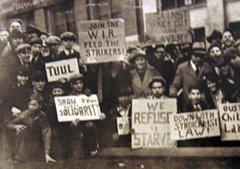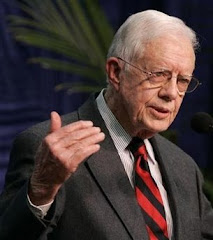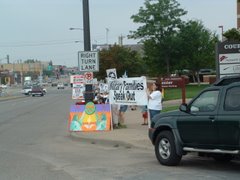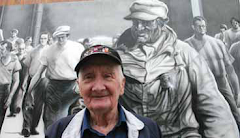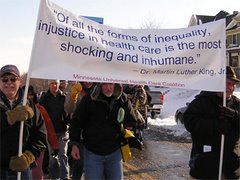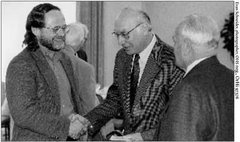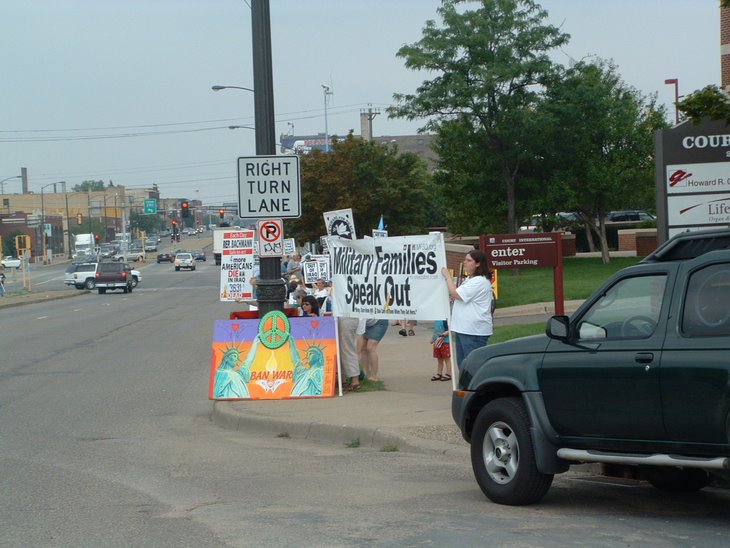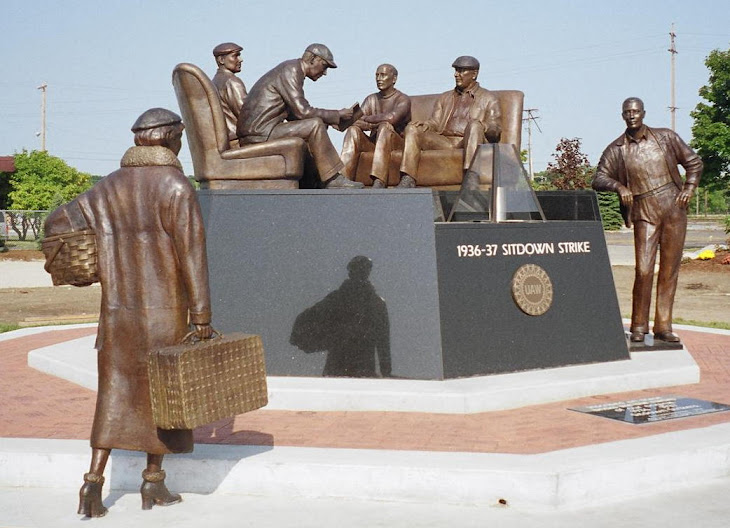Monday, March 3, 2014
Lee Lorch passes.
It was with great sadness that I read of the death of Lee Lorch in the New York Times.
Lee Lorch was a heroic civil rights activist, good friend of the Cuban Revolution and stalwart Marxist.
I first met Lee Lorch in Toronto when he became involved in helping our family fight deportation from Canada...
The civil rights agitator mathematician was forced into exile by racism and McCarthyism-MM
Lee Lorch, Desegregation Activist Who Led Stuyvesant Town Effort, Dies at 98
By DAVID MARGOLICK
New York Times, March 1,2014
http://www.nytimes.com/2014/03/02/nyregion/lee-lorch-desegregation-activist-who-led-stuyvesant-town-effort-dies-at-98.html?hp
Lee Lorch, 95, a leader of an effort 60 years ago to desegregate Stuyvesant Town, at his home in Toronto.
Lee Lorch, a soft-spoken mathematician whose leadership in the campaign to desegregate Stuyvesant Town, the gargantuan housing development on the Lower East Side of Manhattan, helped make housing discrimination illegal nationwide, died Friday at a hospital in Toronto. He was 98.
He died of natural causes, according to his daughter Alice Lorch Bartels.
By helping to organize tenants in a newly built housing complex — and then inviting a black family to live in his own vacant apartment — Mr. Lorch played a crucial role in forcing the Metropolitan Life Insurance Company, which owned the development, to abandon its whites-only admissions policy. His campaign anticipated the sit-ins and other civil rights protests to come.
But Mr. Lorch’s lifelong agitation for racial equality, not just in New York but later in Tennessee and Arkansas, led him into a life of professional turmoil and, ultimately, exile from the US in Canada.
In the spring of 1946, Mr. Lorch — a graduate of Townsend Harris High School in Brooklyn, Cornell University and the University of Cincinnati, where he earned a doctorate in mathematics — returned from wartime service in the Pacific with the Army Air Corps to teach math at City College. Like millions of veterans, he could not find a place to live. After a two-year search, having lived much of the time in a Quonset hut overlooking Jamaica Bay in Brooklyn, he, along with his wife and young daughter, moved into Stuyvesant Town. So did 25,000 other people.
As he later put it, he had all the credentials: “a steady job, college teacher and all that. And not black.”
In 1943, Frederick H. Ecker, the president of Metropolitan Life at the time, told The New York Post: “Negroes and whites don’t mix.” If black residents were allowed in the development, he added, “it would be to the detriment of the city, too, because it would depress all surrounding property.”
A lawsuit against Metropolitan brought in 1947 by three black veterans, and co-sponsored by the American Civil Liberties Union, the American Jewish Congress and the National Association for the Advancement of Colored People, had failed in the state courts, and no local laws prohibited such discrimination; the city had not only supplied the land, and tax breaks, to the insurance company, but let it select tenants as it saw fit.
With 100,000 people vying for the 8,759 apartments on the 72-acre tract, no boycott could possibly work. Any successful protest had to come from inside: Polls showed that two-thirds of those admitted favored integration. Mr. Lorch’s wartime experiences — like seeing black soldiers forced to do the dirty work on his troop transport overseas — had intensified his resolve.
Mr. Lorch became vice chairman of a group of 12 tenants calling themselves the Town and Village Tenants Committee to End Discrimination in Stuyvesant Town.
“When you got into Stuyvesant Town, there was a serious moral dilemma,” he recalled in a 2010 interview with William Kelly of the Stuyvesant Town-Peter Cooper Village Video Project. “In the concentration camps of Nazi Germany, people had seen the end results of racism.”
Some 1,800 tenants eventually joined the group. “Stuyvesant Town is a grand old town; but you can’t get in if your skin is brown,” went one of their chants, Charles V. Bagli of The New York Times wrote in a book about Stuyvesant Town’s history. A group of 3,500 residents petitioned Mayor William O’Dwyer to help eliminate the “No Negroes Allowed” policy, and supported anti-discrimination legislation before the City Council.
But Metropolitan Life held firm. And in early 1949, Mr. Lorch paid the price. Despite the backing of a majority of colleagues in his department, the appointments committee at City College blocked his promotion, effectively forcing him to leave
Mr. Lorch was “unquestionably a fine scholar and a promising teacher,” an alumni committee later concluded, but some colleagues “regarded him, rightly or wrongly, as an irritant and a potential troublemaker.” Mr. Lorch himself charged that the college “protects bigots and fires those who fight bigotry.”
The New York branch of the N.A.A.C.P. and other groups protested the decision to the Board of Higher Education to no avail. In September 1949, Mr. Lorch found a teaching job at Pennsylvania State University, but his reputation preceded him: Upon arriving at the campus, he was taken directly to the university’s acting president.
“He wanted me to explain this stuff about Stuyvesant Town — that they’d been getting phone calls from wealthy alumni essentially wanting to know why I had been hired and how quickly I could be fired,” he recalled in the 2010 interview.
But Mr. Lorch had held on to his Stuyvesant Town apartment, at 651 East 14th St., and he and his wife soon gave a black family, Hardine and Raphael Hendrix and their young son, their apartment for the entire academic year.
Quickly, Metropolitan Life refused to accept the Lorches’ $76 rent check, and began devising ways to get them out. At Penn State, Mr. Lorch was denied reappointment. Accommodating the Hendrixes, a college official told him, was “extreme, illegal and immoral, and damaging to the public relations of the college.”
The decision brought protests from Penn State students, Albert Einstein, the American Association of University Professors and the American Mathematical Society, as well as from The Times and The Daily Worker, the paper of the Communist Party U.S.A.
The Worker argued that Mr. Lorch, who was often linked to the Communist Party, was “an all too rare sort of bird among academic circles these days. He actually believes in the U.S. Constitution which guarantees the Negro people equality! And he not only believes in it, but stands up and fights for what he believes. Amazing!”
In June 1950, the United States Supreme Court declined to review the insurance company’s exclusionary policy. Succumbing to political and economic pressure, Metropolitan Life admitted three black families that year.
But it also moved to evict Mr. Lorch and 34 other protesting tenants. They dug in.
“We had decided — and this was the general feeling on the committee — we weren’t going to go quietly, that we would resist, they’d have to throw us out by force,” Mr. Lorch recalled.
Meantime, in September 1950, he accepted a new academic post, becoming one of two white professors at Fisk University, the historically black institution in Nashville, Tenn. His wife, Grace, a longtime activist herself — she had led the Boston School Committee in its effort to stop women from being fired as teachers the moment they married, as she had been — returned to Stuyvesant Town, where the Teamsters union supplied protection for protesting tenants.
In January 1952, as tenants barricaded themselves in their apartment and picketed outside City Hall and Metropolitan Life’s own headquarters, the company compromised: Mr. Lorch and two other organizers would move out, but the Hendrixes got to stay.
Seven years later, only 47 blacks lived in Stuyvesant Town. But the frustration the campaign helped unleash culminated in the Fair Housing Act of 1968, which prohibited discrimination in the sale, rental, or financing of housing.
At Fisk, Mr. Lorch taught three of the first blacks ever to earn doctorates in mathematics. But there, too, his activism, like attempting to enroll his daughter in an all-black school and refusing to answer questions before the House Un-American Activities Committee about his Communist ties, got him in trouble. In 1955, he was again let go. Only tiny Philander Smith College, an all-black institution in Little Rock, Ark., would hire him, and only when it could find no one else.
“Because he believed in the principles of decency and justice, and the equality of men under God, Lee Lorch and his family have been hounded through four states from the North to the South like refugees in displaced camps,” one of the nation’s most important black journalists, Ethel Payne of The Chicago Defender, wrote in May 1956. “And in the process of punishing Lee Lorch for his views, three proud institutions of learning have been made to grovel in the dust and bow the knee to bigotry.”
It was Grace Lorch who made the headlines the following year, for comforting Elizabeth Eckford of the Little Rock Nine after Ms. Eckford’s walk through a group of angry hecklers outside Little Rock Central High School, a moment captured in a famous photograph. Mr. Lorch, who had become an official with the Arkansas chapter of the N.A.A.C.P., was working behind the scenes, accompanying the black students to school, then tutoring them as they awaited admission.
Once more whites abused the Lorches for their activities, evicting them from their apartment, harassing their young daughter, burning a cross on their lawn and placing dynamite in their garage. And black leaders, mindful of Mr. Lorch’s Communist associations, kept their distance.
“Thurgood Marshall has been busy poisoning as many people as he can against us,” Mr. Lorch complained in October 1957, referring to the lawyer leading the N.A.A.C.P.’s desegregation campaign in the courts and, later, a justice of the United States Supreme Court. The group’s field secretary, Clarence Laws, wrote Mr. Lorch: “The best contribution you could make to the cause of full citizenship for Negroes in Arkansas at this time would be to terminate, in writing, your affiliation with the Little Rock Branch, N.A.A.C.P.”
When, at the end of the school year, Philander Smith declined to renew Mr. Lorch’s appointment, it was official: No American college would have him. So in 1959, he moved his family to Canada — first to the University of Alberta, and then, in 1968, to York University, from which he retired in 1985.
Lee Lorch was born on Sept. 20, 1915 at his home on 149th Street and Broadway in Manhattan to Adolph Lorch and Florence Mayer Lorch. His wife, the former Grace Lonergan, died in 1974. Mr. Lorch is survived by his daughter, Ms. Bartels; two granddaughters, Natasha and Jessica; and a sister, Judith Brooks.
Mr. Lorch was often honored by his fellow mathematicians. In 1990, he received an honorary degree from the City University of New York.
In his 2010 interview with Mr. Kelly, Mr. Lorch insisted that it was his wife and daughter, and not he, who had paid the greatest price for his principles. Asked if he would do anything any differently, he paused. “More and better of the same,” he replied.
Lee Lorch was a heroic civil rights activist, good friend of the Cuban Revolution and stalwart Marxist.
I first met Lee Lorch in Toronto when he became involved in helping our family fight deportation from Canada...
The civil rights agitator mathematician was forced into exile by racism and McCarthyism-MM
Lee Lorch, Desegregation Activist Who Led Stuyvesant Town Effort, Dies at 98
By DAVID MARGOLICK
New York Times, March 1,2014
http://www.nytimes.com/2014/03/02/nyregion/lee-lorch-desegregation-activist-who-led-stuyvesant-town-effort-dies-at-98.html?hp
Lee Lorch, 95, a leader of an effort 60 years ago to desegregate Stuyvesant Town, at his home in Toronto.
Lee Lorch, a soft-spoken mathematician whose leadership in the campaign to desegregate Stuyvesant Town, the gargantuan housing development on the Lower East Side of Manhattan, helped make housing discrimination illegal nationwide, died Friday at a hospital in Toronto. He was 98.
He died of natural causes, according to his daughter Alice Lorch Bartels.
By helping to organize tenants in a newly built housing complex — and then inviting a black family to live in his own vacant apartment — Mr. Lorch played a crucial role in forcing the Metropolitan Life Insurance Company, which owned the development, to abandon its whites-only admissions policy. His campaign anticipated the sit-ins and other civil rights protests to come.
But Mr. Lorch’s lifelong agitation for racial equality, not just in New York but later in Tennessee and Arkansas, led him into a life of professional turmoil and, ultimately, exile from the US in Canada.
In the spring of 1946, Mr. Lorch — a graduate of Townsend Harris High School in Brooklyn, Cornell University and the University of Cincinnati, where he earned a doctorate in mathematics — returned from wartime service in the Pacific with the Army Air Corps to teach math at City College. Like millions of veterans, he could not find a place to live. After a two-year search, having lived much of the time in a Quonset hut overlooking Jamaica Bay in Brooklyn, he, along with his wife and young daughter, moved into Stuyvesant Town. So did 25,000 other people.
As he later put it, he had all the credentials: “a steady job, college teacher and all that. And not black.”
In 1943, Frederick H. Ecker, the president of Metropolitan Life at the time, told The New York Post: “Negroes and whites don’t mix.” If black residents were allowed in the development, he added, “it would be to the detriment of the city, too, because it would depress all surrounding property.”
A lawsuit against Metropolitan brought in 1947 by three black veterans, and co-sponsored by the American Civil Liberties Union, the American Jewish Congress and the National Association for the Advancement of Colored People, had failed in the state courts, and no local laws prohibited such discrimination; the city had not only supplied the land, and tax breaks, to the insurance company, but let it select tenants as it saw fit.
With 100,000 people vying for the 8,759 apartments on the 72-acre tract, no boycott could possibly work. Any successful protest had to come from inside: Polls showed that two-thirds of those admitted favored integration. Mr. Lorch’s wartime experiences — like seeing black soldiers forced to do the dirty work on his troop transport overseas — had intensified his resolve.
Mr. Lorch became vice chairman of a group of 12 tenants calling themselves the Town and Village Tenants Committee to End Discrimination in Stuyvesant Town.
“When you got into Stuyvesant Town, there was a serious moral dilemma,” he recalled in a 2010 interview with William Kelly of the Stuyvesant Town-Peter Cooper Village Video Project. “In the concentration camps of Nazi Germany, people had seen the end results of racism.”
Some 1,800 tenants eventually joined the group. “Stuyvesant Town is a grand old town; but you can’t get in if your skin is brown,” went one of their chants, Charles V. Bagli of The New York Times wrote in a book about Stuyvesant Town’s history. A group of 3,500 residents petitioned Mayor William O’Dwyer to help eliminate the “No Negroes Allowed” policy, and supported anti-discrimination legislation before the City Council.
But Metropolitan Life held firm. And in early 1949, Mr. Lorch paid the price. Despite the backing of a majority of colleagues in his department, the appointments committee at City College blocked his promotion, effectively forcing him to leave
Mr. Lorch was “unquestionably a fine scholar and a promising teacher,” an alumni committee later concluded, but some colleagues “regarded him, rightly or wrongly, as an irritant and a potential troublemaker.” Mr. Lorch himself charged that the college “protects bigots and fires those who fight bigotry.”
The New York branch of the N.A.A.C.P. and other groups protested the decision to the Board of Higher Education to no avail. In September 1949, Mr. Lorch found a teaching job at Pennsylvania State University, but his reputation preceded him: Upon arriving at the campus, he was taken directly to the university’s acting president.
“He wanted me to explain this stuff about Stuyvesant Town — that they’d been getting phone calls from wealthy alumni essentially wanting to know why I had been hired and how quickly I could be fired,” he recalled in the 2010 interview.
But Mr. Lorch had held on to his Stuyvesant Town apartment, at 651 East 14th St., and he and his wife soon gave a black family, Hardine and Raphael Hendrix and their young son, their apartment for the entire academic year.
Quickly, Metropolitan Life refused to accept the Lorches’ $76 rent check, and began devising ways to get them out. At Penn State, Mr. Lorch was denied reappointment. Accommodating the Hendrixes, a college official told him, was “extreme, illegal and immoral, and damaging to the public relations of the college.”
The decision brought protests from Penn State students, Albert Einstein, the American Association of University Professors and the American Mathematical Society, as well as from The Times and The Daily Worker, the paper of the Communist Party U.S.A.
The Worker argued that Mr. Lorch, who was often linked to the Communist Party, was “an all too rare sort of bird among academic circles these days. He actually believes in the U.S. Constitution which guarantees the Negro people equality! And he not only believes in it, but stands up and fights for what he believes. Amazing!”
In June 1950, the United States Supreme Court declined to review the insurance company’s exclusionary policy. Succumbing to political and economic pressure, Metropolitan Life admitted three black families that year.
But it also moved to evict Mr. Lorch and 34 other protesting tenants. They dug in.
“We had decided — and this was the general feeling on the committee — we weren’t going to go quietly, that we would resist, they’d have to throw us out by force,” Mr. Lorch recalled.
Meantime, in September 1950, he accepted a new academic post, becoming one of two white professors at Fisk University, the historically black institution in Nashville, Tenn. His wife, Grace, a longtime activist herself — she had led the Boston School Committee in its effort to stop women from being fired as teachers the moment they married, as she had been — returned to Stuyvesant Town, where the Teamsters union supplied protection for protesting tenants.
In January 1952, as tenants barricaded themselves in their apartment and picketed outside City Hall and Metropolitan Life’s own headquarters, the company compromised: Mr. Lorch and two other organizers would move out, but the Hendrixes got to stay.
Seven years later, only 47 blacks lived in Stuyvesant Town. But the frustration the campaign helped unleash culminated in the Fair Housing Act of 1968, which prohibited discrimination in the sale, rental, or financing of housing.
At Fisk, Mr. Lorch taught three of the first blacks ever to earn doctorates in mathematics. But there, too, his activism, like attempting to enroll his daughter in an all-black school and refusing to answer questions before the House Un-American Activities Committee about his Communist ties, got him in trouble. In 1955, he was again let go. Only tiny Philander Smith College, an all-black institution in Little Rock, Ark., would hire him, and only when it could find no one else.
“Because he believed in the principles of decency and justice, and the equality of men under God, Lee Lorch and his family have been hounded through four states from the North to the South like refugees in displaced camps,” one of the nation’s most important black journalists, Ethel Payne of The Chicago Defender, wrote in May 1956. “And in the process of punishing Lee Lorch for his views, three proud institutions of learning have been made to grovel in the dust and bow the knee to bigotry.”
It was Grace Lorch who made the headlines the following year, for comforting Elizabeth Eckford of the Little Rock Nine after Ms. Eckford’s walk through a group of angry hecklers outside Little Rock Central High School, a moment captured in a famous photograph. Mr. Lorch, who had become an official with the Arkansas chapter of the N.A.A.C.P., was working behind the scenes, accompanying the black students to school, then tutoring them as they awaited admission.
Once more whites abused the Lorches for their activities, evicting them from their apartment, harassing their young daughter, burning a cross on their lawn and placing dynamite in their garage. And black leaders, mindful of Mr. Lorch’s Communist associations, kept their distance.
“Thurgood Marshall has been busy poisoning as many people as he can against us,” Mr. Lorch complained in October 1957, referring to the lawyer leading the N.A.A.C.P.’s desegregation campaign in the courts and, later, a justice of the United States Supreme Court. The group’s field secretary, Clarence Laws, wrote Mr. Lorch: “The best contribution you could make to the cause of full citizenship for Negroes in Arkansas at this time would be to terminate, in writing, your affiliation with the Little Rock Branch, N.A.A.C.P.”
When, at the end of the school year, Philander Smith declined to renew Mr. Lorch’s appointment, it was official: No American college would have him. So in 1959, he moved his family to Canada — first to the University of Alberta, and then, in 1968, to York University, from which he retired in 1985.
Lee Lorch was born on Sept. 20, 1915 at his home on 149th Street and Broadway in Manhattan to Adolph Lorch and Florence Mayer Lorch. His wife, the former Grace Lonergan, died in 1974. Mr. Lorch is survived by his daughter, Ms. Bartels; two granddaughters, Natasha and Jessica; and a sister, Judith Brooks.
Mr. Lorch was often honored by his fellow mathematicians. In 1990, he received an honorary degree from the City University of New York.
In his 2010 interview with Mr. Kelly, Mr. Lorch insisted that it was his wife and daughter, and not he, who had paid the greatest price for his principles. Asked if he would do anything any differently, he paused. “More and better of the same,” he replied.





































